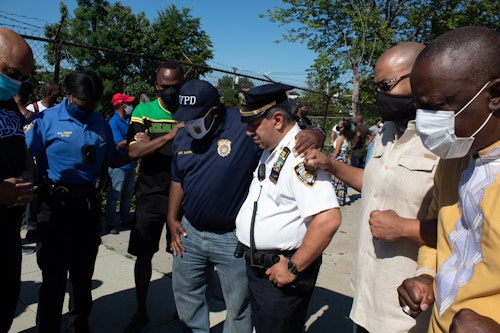Solving Democrats’ Crime Problem: Holding Criminals Accountable, Investing in Prevention

The murder rate in Red States is 40% higher than in Blue States, but Democrats are the ones that have a crime problem with voters. Why, and what can be done about it?
Voters see two root causes of crime: 1) Societal problems like poverty, lack of opportunity, racism, proliferation of guns, and lack of mental health care; and 2) Personal irresponsibility centered on violent decisions at an individual level that are inexcusable and cannot be rationalized away.
Voters feel Democrats only see societal problems as a root cause of crime and ignore and are dismissive of individual irresponsibility.
To be fair, they think Republicans only see one cause and have their own blinders … people making bad decisions who need to be locked up.
The problem is that voters much prefer the Republican blind spots to the Democratic blind spots. Our focus groups of 30 African Americans, 30 Latino Americans, and 30 white Americans, split between the Democratic base and swing voters, bore this out.1
Except for white, urban, Democratic base voters, everyone else preferred the Republican approach to crime over the Democratic approach.
How voters described the Democratic approach to crime:
- Liked: Strong gun laws, mental health services, increasing the minimum wage, housing and low-income assistance.
- Disliked: Defund the Police, bail reform, shorter prison sentences.
How voters described the Republican approach to crime:
- Liked: More police, keeping criminals off the streets for longer.
- Disliked: Weak gun laws, failure to address root causes of crime, militarization of police, overly harsh.
Accountability and Prevention: Communicating Democrats’ ACTUAL approach to crime.
Democrats need to communicate that we are holding criminals accountable for their actions and investing in crime prevention. This is our strong and balanced approach. We will hold people accountable for criminal behavior (that’s the individual responsibility side), while doing everything we can to prevent crime in the first place (that’s the societal ills side). We will be accountable to your neighborhood for getting criminals off the streets (that’s the individual responsibility side), while doing everything we can to build opportunity, community, and support where you live. This is how we can keep communities safe.
- Democrats should validate voters’ concerns about crime in their area and emphasize that improving public safety is a shared priority.
- Accountability can mean incarceration, but there are other measures of accountability that voters accept as well (taking individual responsibility for bad actions, making restitution to victims or the community, undergoing treatment, etc.).
- As the Vera Institute noted, Republicans talk a lot more about crime than do Democrats—both in their paid and earned communications. Crime is a top issue and should not be avoided. With a strong and balanced message, Democrats should be able to go toe-to-toe on an issue that Republicans are counting on to gain support.
- Ideas like bail reform are important, but reject harmful slogans (“No cash bail!”) and make certain that all reform attempts pass the policy and communications test of public safety first.
- Finally, Democrats have made some blunders on crime that were highly damaging. But we have also done a lot right. We’ve passed the Bipartisan Safer Communities Act, increased local police funding in ARP, provided steadfast support for the FBI and other federal law enforcement offices, and invested heavily in prevention. Don’t wait to be asked—be proactive in telling the story of how Democrats are making communities safer.
Endnotes
Global Strategy Group online journals in 9 presidential battleground states June 21-June 23, 2023. 15 participants in each of the following groups: white American Urban, white American Suburban, African American Urban, African American Suburban, Latino American Urban, Latino American Suburban. 45 Democratic base voters, 45 swing voters.
